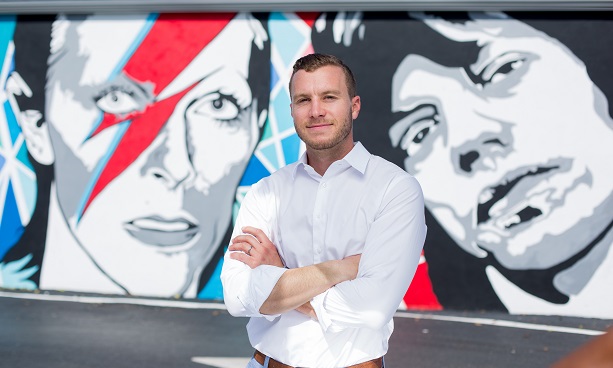 Jaime Sturgis
Jaime SturgisAt just 30 years old, Fort Lauderdale native Jaime Sturgis has become well known for his specialty identifying South Florida's urban neighborhoods with untapped potential in emerging markets. Following nearly seven years as a top-producing leasing and investment sales broker in Broward County, Sturgis launched Fort Lauderdale-based Native Realty in 2017. He discusses here the hottest and most in-demand areas, among other subjects.
What are the hottest South Florida urban neighborhoods these days?
Flagler Village in Fort Lauderdale is perhaps the hottest urban neighborhood in all of South Florida and on the short-list of the top emerging neighborhoods in the entire Southeast. The recent transformation of Flagler Village from a neighborhood of outdated, vacant commercial properties to a trendy enclave of popular restaurants and bars, creative offices, new multifamily communities and bustling art galleries and performance arts venues is astounding. Native Realty is fortunate to be based in Flagler Village and play a key role in curating and placemaking in the neighborhood.
Elsewhere in Fort Lauderdale, the 13th Street corridor is taking shape as a young Las Olas Boulevard. Centrally located between Flagler Village and Wilton Manors, the block is home to Warsaw Coffee, Milk Money bar and restaurant, Gulfstream Brewing and men's barber shop Buck & Beards. We recently completed leases with several new businesses there: international Jiu-Jitsu school Renzo Gracie Academy, live music operator Garden Box and LoveLee Bakery.
Pompano Beach is also experiencing a transformation. The city has historically been a quieter area popular with snowbirds, but it is going through a renaissance with an influx of new residential and commercial development. We are also seeing new hotel construction happening throughout Pompano Beach.
Within those neighborhoods, what real estate sectors are seeing the most demand?
Retail and creative office are still major drivers. There is a high concentration of multifamily developments being delivered in the urban core, a lot of which is void of a commercial component. This lack of retail and office in close proximity to the residential rooftops has created a supply and demand imbalance, which can be opportunistic for investors. Many urbanites, millennials especially, want to live, work and play in the same area. The ability to walk to work and have less reliance on the car is common theme. Savvy investors are seeing this opportunity and capitalizing on the opportunity to meet the latent demand. Many of the urban neighborhoods in South Florida were formerly industrial districts, and the warehouses are being adaptively repurposed to meet this growing retail and office demand. There are still opportunities to re-imagine older warehouse buildings with creative uses.
Why are we starting to see more adaptive re-use of existing buildings vs. ground-up development?
There is a severely limited amount of raw land available in South Florida for ground-up development. When you combine that a much quicker turnaround time to get through the permitting and construction process when repurposing an existing building, adaptive re-use is a desirable alternative. The permitting process for new construction in high-density neighborhoods has become cumbersome and construction costs continue to rise, so it is substantially less expensive and quicker to repurpose a building.
Another aspect of this is that part of the charm, especially for millennials, is being part of a neighborhood where existing buildings are being recycled and given a fresh new life as another use (or mix of uses). Some of these buildings are 50-to-60 years old and have a visual appeal and architectural characteristics you don't see every day. That goes well with the grassroots, bohemian style of these emerging neighborhoods.
Are South Florida developers looking to take advantage of the tax reform bill and creation of opportunity zones?
People are absolutely interested in it. The details are still a little gray, so there needs to be clarity on what the regulations will look like. There is no shortage of pent-up demand, but this is a “hurry up and wait” situation. The industry is waiting to see how the rules will impact them and needs more guidance on how to be compliant. Accountants are watching it, I'm watching it. It's a fluid process.
The Treasury Department is expected to issue additional guidance in the near future, which should help move things forward.
What are some other key real estate trends to monitor in the fourth quarter of 2018 and heading into 2019?
Nationally, the media talks about a retail apocalypse. While it is true that big-box retailers are having a tough time, but in many corners experiential retail is flourishing. There is an opportunity in that sector from an investment standpoint that is perhaps being overlooked by larger REITs or institutional investors.
Multifamily continues to be on fire with demand from investors and developers. The constraints on would-be first-time homebuyers are leaving people in the rental pool for much longer. We don't see that slowing down any time soon.
© Touchpoint Markets, All Rights Reserved. Request academic re-use from www.copyright.com. All other uses, submit a request to [email protected]. For more inforrmation visit Asset & Logo Licensing.







